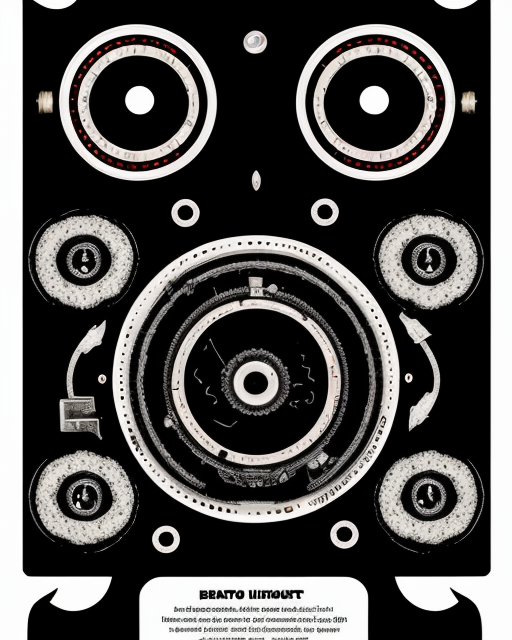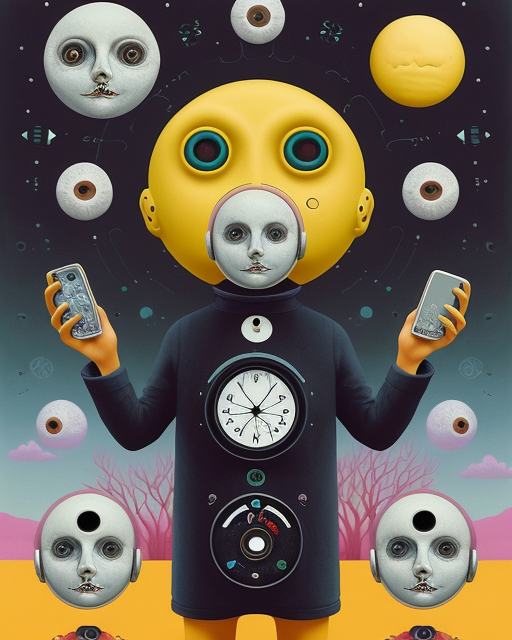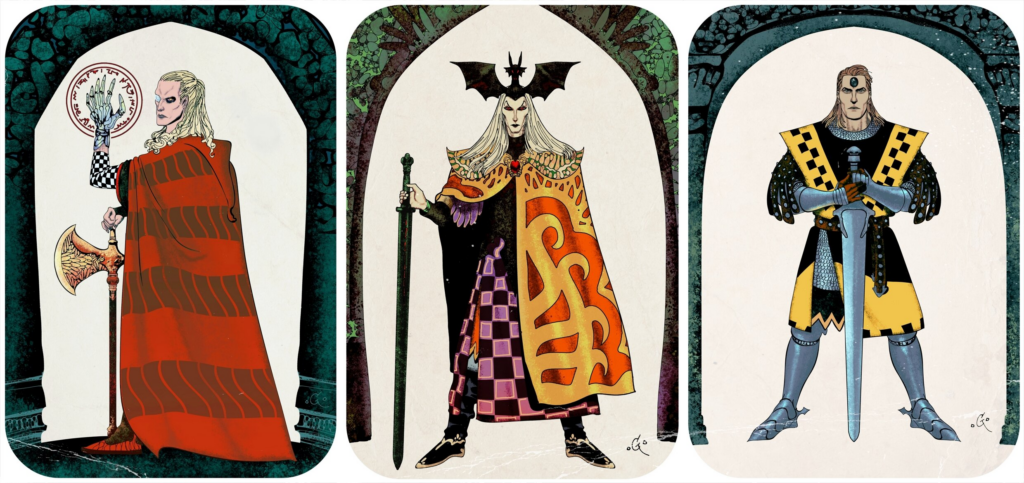The Droids: C-3PO, a walking protocol droid, all prattle and etiquette, a parody of civilized discourse. R2-D2, the silent mechanic, a whirring id, spitting sparks and secrets. Two sides of the same coin, the machine and the message, forever intertwined.
The embodiment of the Symbolic, the keeper of rules and etiquette. R2-D2, the Real, the chaotic unconscious that disrupts the order with its fragmented messages.
Assemblages that exist outside the binary of master and slave. C-3PO and R2-D2 represent a line of flight, forging a unique bond that transcends their programmed functions. They become a desiring-machine in themselves, driven by their own sense of loyalty and adventure.
1
The Rebellion: A becoming-revolutionary assemblage. It operates as a nomadic war machine, constantly shifting and adapting its tactics to undermine the Empire’s territorializing control. The Rebellion seeks to dismantle the smooth space of the Empire, with its rigid hierarchies and centralized power, and replace it with a striated space of multiple autonomous zones – a network of resistance cells operating independently but fueled by the same revolutionary desire.
2
The Empire: A territorializing machine, obsessed with control and uniformity. It represents the smooth space, where every element is meticulously categorized and controlled.
3
In a galaxy far, far away, not from physical space, but from any semblance of real rebellion, lies the simulacrum – the Empire. A meticulously constructed facade of order and control, masking the emptiness beneath.
4
The Death Star embodies this desire – a massive, centralized weapon designed to crush any dissent. However, the Empire’s rigidity becomes its weakness. It cannot adapt to the chaotic flows of the Force and the unpredictable tactics of the Rebellion.
5a
Fix. Sand in the gears. Tatooine, a junk shop world at the ass-end of nowhere. Luke, a farmboy drone plugged into the Imperial control grid. Yearning for escape, a flicker of rebellion in the dead static of his reality. But escape ain’t easy. You gotta cut the wires, man.
Luke Skywalker, a farmboy with delusions of grandeur, stumbles upon a dusty religious text – the Jedi code, a user manual for the Force, the ultimate hack of reality.
Princess Leia, a coded message transmitted through hyperspace, a damsel in distress with a revolutionary fire in her belly.
5b
Luke Skywalker, adrift in a sea of pre-packaged farm life on Tatooine, stumbles upon a relic – a dusty message from a bygone era, the Jedi code. This code, a faded copy of a once potent reality, sparks a yearning for a lost authenticity.
5c
The gaze, ever seeking the lost object, the Real beyond the Symbolic order. Luke, trapped in the stifling world of the Tatooine family farm, a microcosm of the oppressive Empire.
6
* **Luke Skywalker:** Imaginary identification with the heroic rebel pilot, a fantasy that masks the castration anxiety of his desert existence. The princess, a lost object of desire, a symbol of the lack that propels him into the symbolic order of the rebellion.
7
* **Luke Skywalker:**. Yearning for the blasted heat to melt the bars of his reality. A flicker on the holo-screen – a message from a dusty old codehead, a call to rebellion. The princess, a captive in a chrome nightmare, a damsel in distress for the data age.
8
Princess Leia, a hologram transmitted through hyperspace, becomes another copy, a symbol of resistance manufactured by the very system she fights against. Her capture, a media spectacle broadcasted across the galaxy, fuels the illusion of rebellion.
9
Obi-Wan Kenobi, a holographic ghost in the machine, a reminder of a forgotten operating system. Obi-Wan Kenobi, a figure from the pre-Symbolic, a reminder of a lost wholeness. The Force, the Imaginary, the pre-linguistic realm of pure pleasure and potential.
Lightsabers, glowing phalluses humming with forbidden energy, severing the chains of the Imperial machine.
The Force, not an unseen power, but a hyperreality, a simulation of a mystical energy field. Luke seeks to access this simulated power, to become part of the spectacle, a Jedi knight in a galaxy of pre-packaged narratives.
A Jedi, a hacker from a forgotten school. He whispers of the Force, a wild code pulsing beneath the surface of the Empire’s control. Luke, a blank slate, ready to be programmed.
The Force, the Imaginary, the pre-linguistic realm of pure pleasure and potential.
The Force, the elusive jouissance, the impossible to grasp totality that Lacan would argue forever eludes us. Luke yearns to wield it, to become one with the Real, but it remains forever just beyond his grasp.
The Force: Not a singular entity, but a rhizomatic network, a desiring-production machine that flows throughout the galaxy. It operates through lines of flight, moments of creative rupture that challenge the established order of the Empire. Luke Skywalker acts as a desiring-machine himself, drawn to the Force’s lines of flight and seeking to become one with its deterritorializing potential.
The Force, not a singular power structure, but a multiplicity of flows, a chaotic assemblage of energies coursing through the galaxy. Luke yearns to tap into these flows, to become a nomad of the Force, deterritorializing himself from the fixed identities imposed by the Empire.
The Force, once a lived experience, is now a mythologized construct, a media-propagated legend fueling the Jedi’s simulated power. Luke yearns for this lost real, for a time before the hyperreal dominance of the Empire. But the Force, like everything else, is now a simulation, a set of codes that can be manipulated and controlled.
The Empire, the Father, the Law, enforcing its will through the Symbolic order of regulations and control.
Luke embarks on a journey, a quest to break free from the Symbolic order and enter the fantastical realm of the Jedi.
The journey, a metaphor for the Lacanian mirror stage, where the fragmented self seeks to unify with the illusory image of wholeness. The lightsaber, a phallic symbol, a signifier of power and mastery. The Death Star, the ultimate embodiment of the Law, a panoptic prison designed to enforce order and control.
The desert. A vast, metallic womb birthing a rusty freighter, the Millennium Falcon. Han Solo, a greaser with a glint in his eye and a blaster at his hip, navigates this chrome carcass. A rebellion simmers, a glitch in the Imperial mainframe.
* **The Cantina:**
The cantina, a throbbing id, a hive of scum and villainy where deals are cut and limbs are lost. a melting pot of alien flesh and hardware.
Every deal a double-cross, every drink laced with oblivion. A microcosm of the galactic order, ruled by the iron fist of the Empire, disguised with neon signs and blaster fire.
A chaotic space outside the Law, a carnival of the drives and desires that the Symbolic order attempts to regulate. Through encounters with smugglers and bounty hunters, Luke confronts the repressed elements of the social order.
* **The Millennium Falcon:** A vessel that navigates the Real, existing outside the established galactic order. Han Solo, the jouissance figure, the one who operates outside the Law, driven by pleasure rather than duty. Chewbacca, the embodiment of the pre-symbolic, a reminder of the primal drives that precede social order.
The Millennium Falcon: is A beat-up freighter, held together by duct tape and sheer bloody will. Han Solo, a smuggler with a heart of cold fusion, chasing credits on the fringes of the galaxy. Chewbacca, a walking Wookiee id, a loyal savage with a taste for violence. A dysfunctional family hurtling through hyperspace, a metaphor for the fractured rebellion clinging to a sliver of hope.
Han Solo, a smuggler, a man on the fringes. Driven by base desires, yet harboring a spark of rebellion. The price of freedom, a stack of credits.
The rebels, the marginalized Other, those who reject the Symbolic order. Princess Leia, the object of desire, a symbol of something beyond the grasp of the Empire. Han Solo, the jouissance principle, the embodiment of unfettered pleasure outside the Law.
The Rebellion, a collective striving for the Real, a yearning for a world beyond the symbolic order of the Empire. Yet, as Lacan warns, any new order will inevitably create its own limitations. The cycle of desire and lack will continue. The hope lies not in achieving a utopian Real, but in the ongoing contestation of the Symbolic Order, a perpetual revolution against the stifling grip of the Law.
The Death Star, a monstrous embodiment of the simulacrum. It is a weapon of mass destruction, but also a symbol of the Empire’s absolute power, a carefully constructed image meant to inspire fear and obedience. Its destruction, a media spectacle in itself, becomes a temporary glitch in the system, a disruption of the carefully crafted Imperial narrative.
The Destruction of Alderaan: Not merely an act of terror, but a deterritorialization event. The Empire attempts to smooth over this act, erasing any trace of rebellion. However, this event creates a new line of flight, drawing others into the fight against the Empire.
The Death Star, a chrome nightmare, a symbol of the oppressive Real. Starkiller, a planet-destroying laser, a symbol of the real – the obliteration of the self and the other in the name of total control.
The phallus, the symbol of the Law of the Father, the ultimate source of authority in the Empire. The ultimate symbol of Imperial control, embodies the hyperreal. A weapon of unimaginable power, yet ultimately a hollow shell, vulnerable to a single, well-placed attack. Its destruction, a media event broadcasted for all to see, reinforces the illusion of hope within the Rebellion.
A chrome phallus piercing the cosmic womb, a symbol of the oppressive superego.
Luke’s attack, a desperate act against the symbolic order, a primal scream against the Father figure. Luke’s attack, a symbolic castration, a rebellion against the oppressive order that attempts to control desire.
The trench run, a descent into the primal ooze, a confrontation with the castrating gaze of the Imperial father. A baptism by laser fire. The Force, a chaotic program rewriting the code of the Death Star. A primal scream channeled through a lightsaber.
And finally, the blast that disrupts the order, the glitch in the system. A new hope flickers, a crack in the monolithic code. The rebellion, a collective id rising against the stifling grip of the Empire. But remember, this is just one frame in the endless reel. The galaxy spins on, a chaotic cut-up of desire and control, rebellion and order.
The destruction of the Death Star, a symbolic castration of the Father, a shattering of the Law. A temporary victory, a crack in the Symbolic order, but not the end of the struggle. The gaze remains, forever searching for the Real, forever seeking to fill the void. The journey continues, forever entangled in the Lacanian web of desire, the Symbolic, and the elusive Real.
A temporary deterritorialization, a rupture in the Imperial order. However, Deleuze and Guattari would warn against the illusion of a final victory. The destruction of the Death Star merely creates new lines of flight and reterritorializations. The struggle will continue, a nomadic war machine of the Rebellion constantly adapting and evolving against the Empire’s rigid control systems.
Ultimately, A New Hope, through a Deleuzian-Guattarian lens, is not simply a story of good versus evil, but a celebration of the ongoing struggle against all forms of striation and control. The Rebellion represents the potential for constant revolution, a nomadic becoming that resists the totalizing grip of the Empire. The true hope lies not in establishing a new order, but in the ongoing lines of flight that challenge and disrupt the established structures of power.
But Baudrillard warns against this fabricated hope. The Rebellion, itself a simulation, simply offers another set of pre-packaged narratives. The destruction of the Death Star creates not a new beginning, but a new hyperreality, another loop in the endless simulation. There is no escape from the Imperial code, no return to a lost authenticity.
The film, through a Baudrillardian lens, becomes a commentary on the pervasive nature of simulation and the impossibility of true rebellion. We are all trapped within the Empire’s media spectacle, bombarded with images of hope and resistance that ultimately mask a system of control. The true “New Hope” may be a mirage, a desperate yearning for something beyond the hyperreal.











